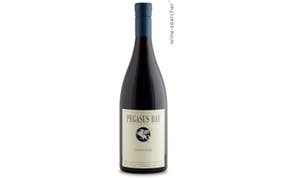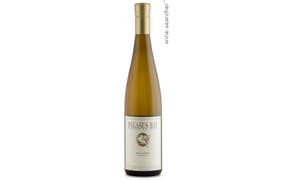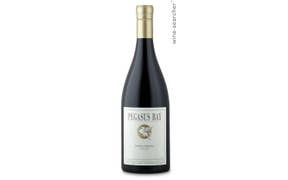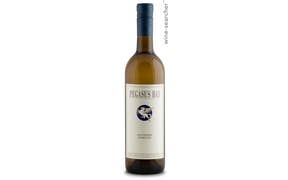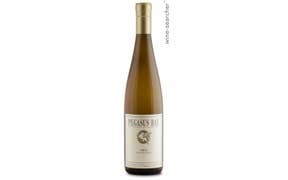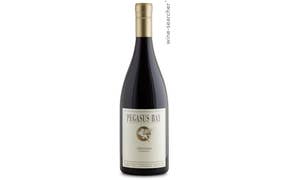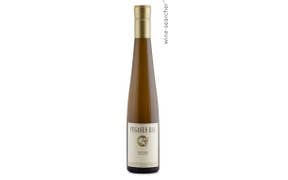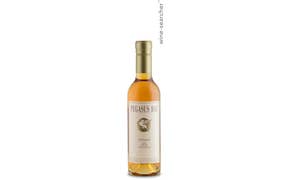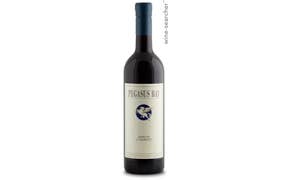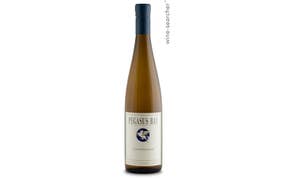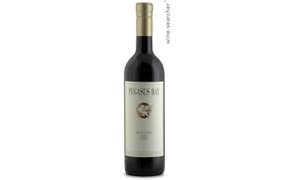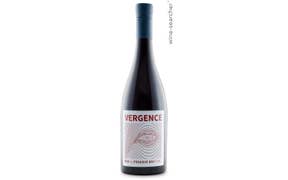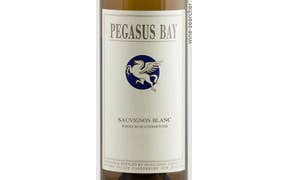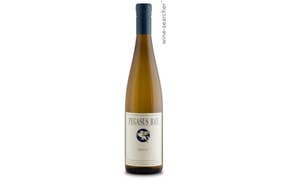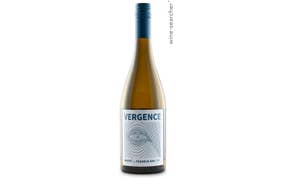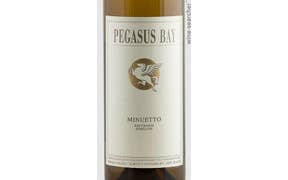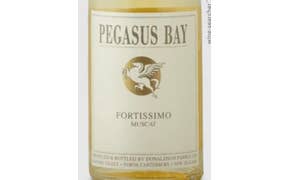
2017 Pegasus Bay Chardonnay
-
- Most Recent Global Avg Price (ex-tax)
- $ 30 / 750ml
- From September 2025
-
4 from 4 User Ratings
- 3 Critic Reviews
- Style White - Tropical and Balanced
- Grape Variety Chardonnay
- Food Pairing Chicken and Turkey
-
-
Producer tasting notes: (2017 vintage) "The colour is lemon/straw. On the nose there are aromas of citrus, as well as honeydew melon and some stone fruit (peach and nectarine). In addition there is a hint of struck match which adds complexity and a flinty minerality. There are also some underlying savoury notes (toast and brioche) as a result of the secondary fermentation and lees contact in the barrel. The palate is concentrated, however the earlier picking has resulted in a wine that remains elegant and focussed, with refreshing acidity and a lingering finish." - Pegasus Bay Winery
-
- Learn more Hide
You may also like
Based on your past searches Includes sponsored offers
Free delivery for 12 bottles or orders HK $3000.
More shipping infoShipping info
Highlights





Details
- Producer Notes
- The Donaldson Family have been seriously involved in viticulture and winemaking for over 40 years. Founder Ivan Donaldson planted the first Canterbury vineyard in 1976 and went on to establish Pegasus Bay in 1986 with his wife Christine. It is a true family business, with all four of their sons and two spouses involved, managing various aspects.
- Drinking Window
- 2020 - 2024
- Alcohol ABV
-
14%
- Sweetness
-
Dry
- Acidity TA
-
6.5 g/L
- Maturation
-
Oaked
- Harvest date
-
2 April - 9 April
- Vineyard Notes
-
The vineyard is located within the Waipara Valley of North Canterbury, on free draining, north facing terraces carved out of New Zealand’s Southern Alps by an ice-age glacier. It benefits from being in the lee of the Teviotdale Range, giving maximum protection from the Pacific’s easterly breezes and thus creating a unique mesoclimate. The vines are over 30 years old, with a large proportion planted on their own roots. The soil is free draining and of low fertility, resulting in naturally reduced vine vigour. This produces low yields of optimally ripened, high quality, flavourful grapes, which fully express the qualities of this unique terroir. The vineyard has warm days, but the nights are amongst the coolest in the Waipara Valley, drawing out the ripening period of the grapes, while still retaining good natural acidity.
Read more
- Vintage Notes
-
Settled weather over flowering resulted in a moderate fruit set. The subsequent warm summer then allowed the grapes to ripen beautifully. Naturally smaller berry size and loose open bunches helped accelerate ripening, allowing us to pick the fruit a little earlier this season than usual.
Read more
- Winemaking
-
We use traditional Burgundian winemaking methods. The fruit was hand-picked in stages during early April and then the whole bunches gently pressed. The nonclarified juice was then put into large French oak barrels (puncheons), 70% of which were old in order to limit pickup of oak flavour. In these it underwent primary fermentation by the grapes indigenous yeasts. The wine was then matured in the puncheons on its natural deposits of yeast lees (sur lie). In the summer after harvest it started to go through spontaneous secondary (malolactic) fermentation. It was regularly tasted during this time and the fermentation was stopped when the ideal balance was obtained.
Read more
- Ageing
-
It had approximately 12 months maturation prior to bottling
- Producer Tasting Notes
-
The colour is lemon/straw. On the nose there are aromas of citrus, as well as honeydew melon and some stone fruit (peach and nectarine). In addition there is a hint of struck match which adds complexity and a flinty minerality. There are also some underlying savoury notes (toast and brioche) as a result of the secondary fermentation and lees contact in the barrel. The palate is concentrated, however the earlier picking has resulted in a wine that remains elegant and focussed, with refreshing acidity and a lingering finish.
Read more
- Cellaring potential
-
10+ years
Details
- Producer Notes
- The Donaldson Family have been seriously involved in viticulture and winemaking for over 40 years. Founder Ivan Donaldson planted the first Canterbury vineyard in 1976 and went on to establish Pegasus Bay in 1986 with his wife Christine. It is a true family business, with all four of their sons and two spouses involved, managing various aspects.
- Drinking Window
- 2020 - 2024
- Alcohol ABV
-
14%
- Sweetness
-
Dry
- Acidity TA
-
6.5 g/L
- Maturation
-
Oaked
- Harvest date
-
2 April - 9 April
- Vineyard Notes
-
The vineyard is located within the Waipara Valley of North Canterbury, on free draining, north facing terraces carved out of New Zealand’s Southern Alps by an ice-age glacier. It benefits from being in the lee of the Teviotdale Range, giving maximum protection from the Pacific’s easterly breezes and thus creating a unique mesoclimate. The vines are over 30 years old, with a large proportion planted on their own roots. The soil is free draining and of low fertility, resulting in naturally reduced vine vigour. This produces low yields of optimally ripened, high quality, flavourful grapes, which fully express the qualities of this unique terroir. The vineyard has warm days, but the nights are amongst the coolest in the Waipara Valley, drawing out the ripening period of the grapes, while still retaining good natural acidity.
Read more
- Vintage Notes
-
Settled weather over flowering resulted in a moderate fruit set. The subsequent warm summer then allowed the grapes to ripen beautifully. Naturally smaller berry size and loose open bunches helped accelerate ripening, allowing us to pick the fruit a little earlier this season than usual.
Read more
- Winemaking
-
We use traditional Burgundian winemaking methods. The fruit was hand-picked in stages during early April and then the whole bunches gently pressed. The nonclarified juice was then put into large French oak barrels (puncheons), 70% of which were old in order to limit pickup of oak flavour. In these it underwent primary fermentation by the grapes indigenous yeasts. The wine was then matured in the puncheons on its natural deposits of yeast lees (sur lie). In the summer after harvest it started to go through spontaneous secondary (malolactic) fermentation. It was regularly tasted during this time and the fermentation was stopped when the ideal balance was obtained.
Read more
- Ageing
-
It had approximately 12 months maturation prior to bottling
- Producer Tasting Notes
-
The colour is lemon/straw. On the nose there are aromas of citrus, as well as honeydew melon and some stone fruit (peach and nectarine). In addition there is a hint of struck match which adds complexity and a flinty minerality. There are also some underlying savoury notes (toast and brioche) as a result of the secondary fermentation and lees contact in the barrel. The palate is concentrated, however the earlier picking has resulted in a wine that remains elegant and focussed, with refreshing acidity and a lingering finish.
Read more
- Cellaring potential
-
10+ years
Critics Scores & Reviews
(3)User Ratings
(4)Compare vintages
Vintage quality: Good
Current condition: Ready to drink, will keep
The New Zealand vintage for 2017 was a success despite some difficulties.
The growing season had been cooler than average and dry – although some regions like the Hawke's Bay did reach searingly hot temperatures. Autumn brought heavy rains right before the h...
Price History
Availability Over Time
Search Rank Over Time
Wine-Searcher also produces detailed reports for market insights into the industry.Learn more









